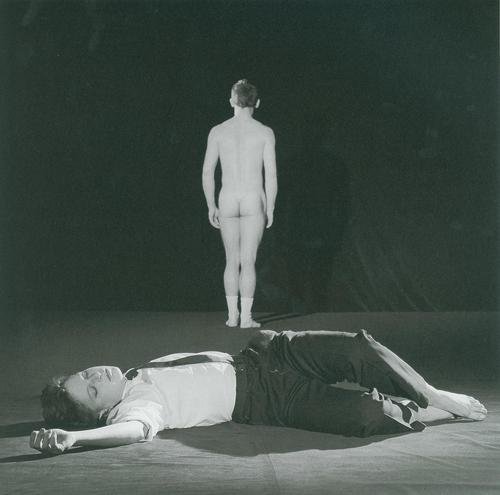Jan Fabre
dal 26/7/2007 al 27/10/2007
Segnalato da
26/7/2007
Jan Fabre
Museum der Moderne - Rupertinum, Salzburg
In the exhibition, Fabre combines a number of his own project sketches, drawings and models for further discussion with a selection of photographs made by photographers of his theatre productions during the rehearsal stage and in performance. Nine photographers, including Robert Mapplethorpe, Helmut Newton and Carl de Keyzer, have immortalized Fabre's productions in their pictures since the 1980s. A large selection of these photographs is collected here.

Die verliehene Zeit
curated by Margit Zuckriegl
The works of Antwerp artist Jan Fabre defy categorization of any kind. He is an
artist who pushes boundaries, and is at home in many different fields. In the last
25 years he has produced more than 30 dance, theatre and opera productions. At
the same time, he has also created countless artistic works, some of which could
be seen at documenta (1992) and the Venice Biennale (1997).
In the exhibition “Die verliehene Zeit”, Fabre combines a number of his own project
sketches, drawings and “models for further discussion” with a selection of
photographs made by photographers of his theatre productions during the rehearsal
stage and in performance. Nine photographers, including Robert Mapplethorpe,
Helmut Newton and Carl de Keyzer, have immortalized Fabre’s productions
in their pictures since the 1980s. A large selection of these photographs is collected
here. Each photographer responds differently to Jan Fabre’s productions,
transmitting what is seen in their own pictorial language, thereby going beyond
the field of the documentary and the practical field of conventional stage photography.
The exhibition includes some 150 works: b/w and colour photographs, crayon drawings
and objective scale models. The earliest works refer to the stage work, which Jan Fabre
developed for the Salzburg Festival in summer 2007: “Requiem for a metamorphosis”.
In this “theatrical mass for the dead with actors, dancers and musicians”, Fabre places
the theme of transformation through death at the centre, a theme that has surfaced
again and again in his work.
Biography
Born in Antwerp in 1958 as the grandson of the famous French insect researcher
Jean-Henri Fabre, Jan Fabre also began his training there at the City Institute for
Decorative Arts and at the Royal Academy for Fine Arts. Early on he began to experiment
with solo works, embraced various media and techniques, and presented
his drawings, sculptures and stage works in numerous international exhibitions. At
the end of the 1970s, he developed the concept “Blue Hour”: fabrics, glasses,
furniture, and even installations are entirely covered in a melancholic blue. In his
theatre pieces after 1980, he is the author, actor, director, stage and lighting designer
at the same time. His tendency toward Gesamtkunstwerk – the overall
work of art - culminates in poetically enigmatic operas such as “Sweet Temptations”,
1992, and “Glowing Icons”, 1998. His one-man shows have been presented
at the Stedelijk Museum in Amsterdam, at the Sprengel Museum in Hannover, at
the Kunsthalle in Basel, at the MUHKA Museum in Antwerp and at the Schirn
Kunsthalle in Frankfurt.
Image: Robert Mapplethorpe, Kathinka and Moon, aus: The Power of Theatrical Madness, Antwerpen. 1985, s/w Fotografie
Press/Public Relations
Beate Golaschewski - Mönchsberg 32 5020 Salzburg • Austria T+43.662 84 22 20-601 F +43.662 84 22 20-701 beate.golaschewski@mdmsalzburg.at
Media tour: Thursday, 26/07/07, 2:00 p.m.
Exhibition Opening: Friday, 27/07/07, 3:00 p.m.:
Big Opening in the Faistauer-Foyer, House of Mozart, in cooperation with the Salzburg Festival.
Museum der Moderne - Rupertinum
Wiener Philharmoniker Gasse, 9 - Salzburg
opening hours:
tuesday to sunday: 10:00 a.m.- 06:00p.m.
wednesday: 10:00 a.m. - 09.00 p.m.
monday: the Museum der Moderne Salzburg is closed



